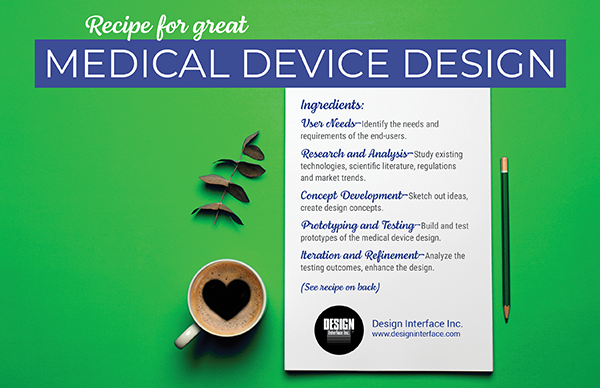Step into the kitchen of innovation, where the art of culinary creation finds its parallel in the meticulous process of crafting exceptional medical devices. In this recipe for success, we distill the complex endeavor of medical device design into five essential steps, each playing a vital role in the final masterpiece. Just as a chef combines ingredients with precision, we combine research, creativity, and refinement to bring forth the recipe for achieving greatness in medical device design.
Step 1: User Needs
Just like any good recipe starts with understanding the taste preferences of the diners, a successful medical device design begins by identifying the needs and requirements of the end-users. Engage with healthcare professionals, patients, and other stakeholders to understand their challenges, expectations, and desired outcomes.
Step 2: Research and Analysis
Similar to gathering the necessary ingredients and understanding their properties before cooking, thorough research and analysis are crucial in medical device design. Study existing technologies, scientific literature, regulations, and market trends. Identify potential risks and limitations, while also considering ethical considerations.
Step 3: Concept Development
Just as a chef imagines a dish and plans the recipe, it’s time to brainstorm and develop concepts for your medical device. Sketch out ideas, create design concepts, and evaluate their feasibility, functionality, and potential impact. Consider factors such as usability, ergonomics, aesthetics, and manufacturability.
Step 4: Prototyping and Testing
Just as a cook prepares a sample dish to taste and refine, it’s essential to build prototypes of the medical device design. Utilize rapid prototyping techniques, 3D printing, or other suitable methods to create physical or virtual models. Test the prototypes rigorously, considering performance, safety, durability, and user feedback. Iterate and refine the design based on the test results.
Step 5: Iteration and Refinement
Like adjusting seasoning or making slight modifications to improve a dish, the final step involves iteration and refinement of the medical device design. Analyze the testing outcomes, and incorporate feedback from users, medical professionals, and regulatory requirements. Enhance the design, address any identified issues, and optimize the medical device’s functionality, reliability, and user experience.
As the final garnish is placed thoughtfully to elevate a dish, the meticulous execution of each step in this recipe enriches the world of medical device design. Just as a memorable meal lingers on the palate, let these principles leave a lasting imprint in your approach to innovation. With this recipe as your guide, may your future endeavors in medical device design be nothing short of a culinary masterpiece that revolutionizes healthcare and enhances well-being.
Design Interface Inc. can show you what is possible. Our forward-thinking solutions for product design, package design, medical device design, graphic design, and photography unlock the value of your ideas as we communicate your message and goals. See more here: https://designinterface.com/

